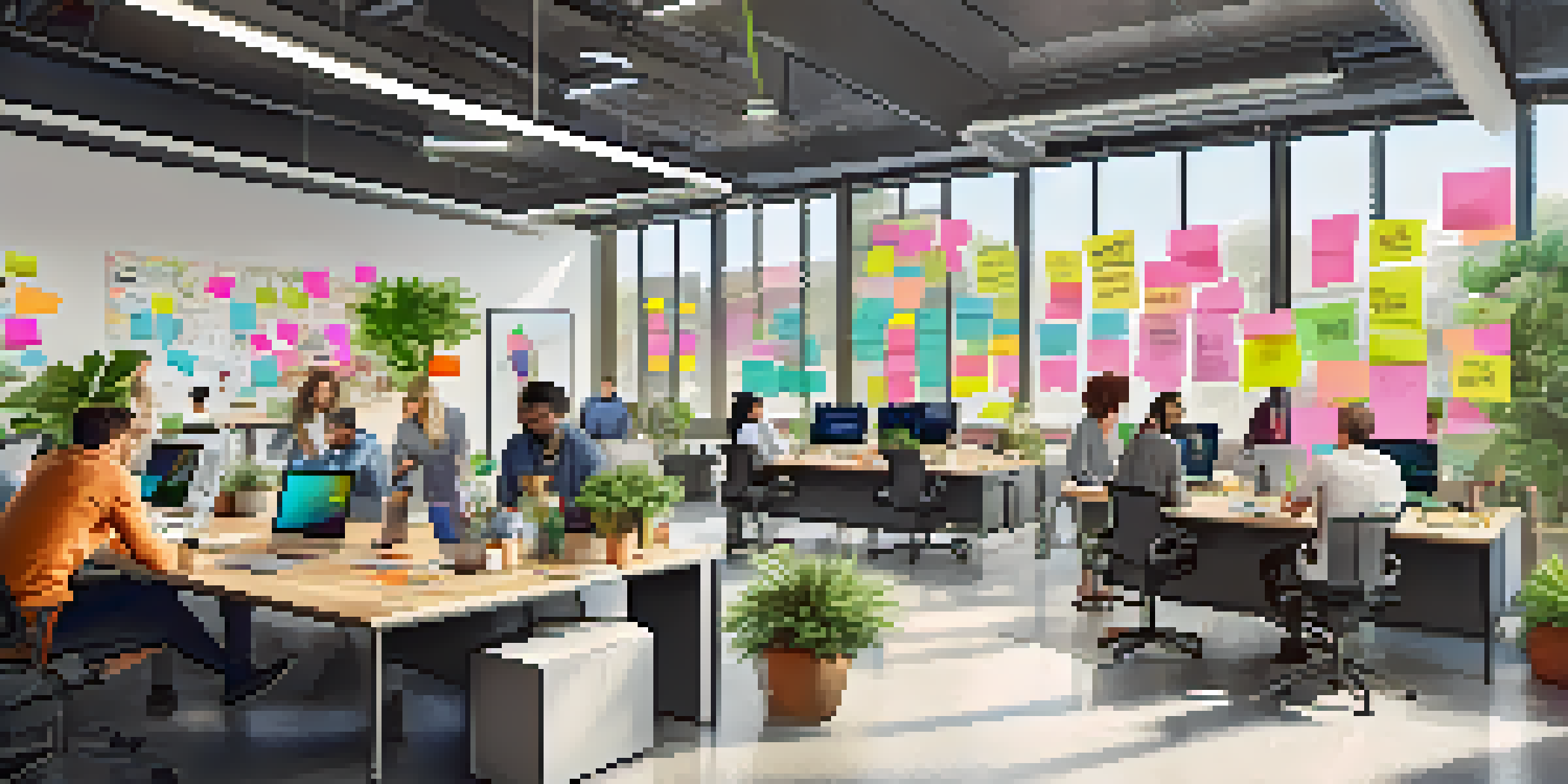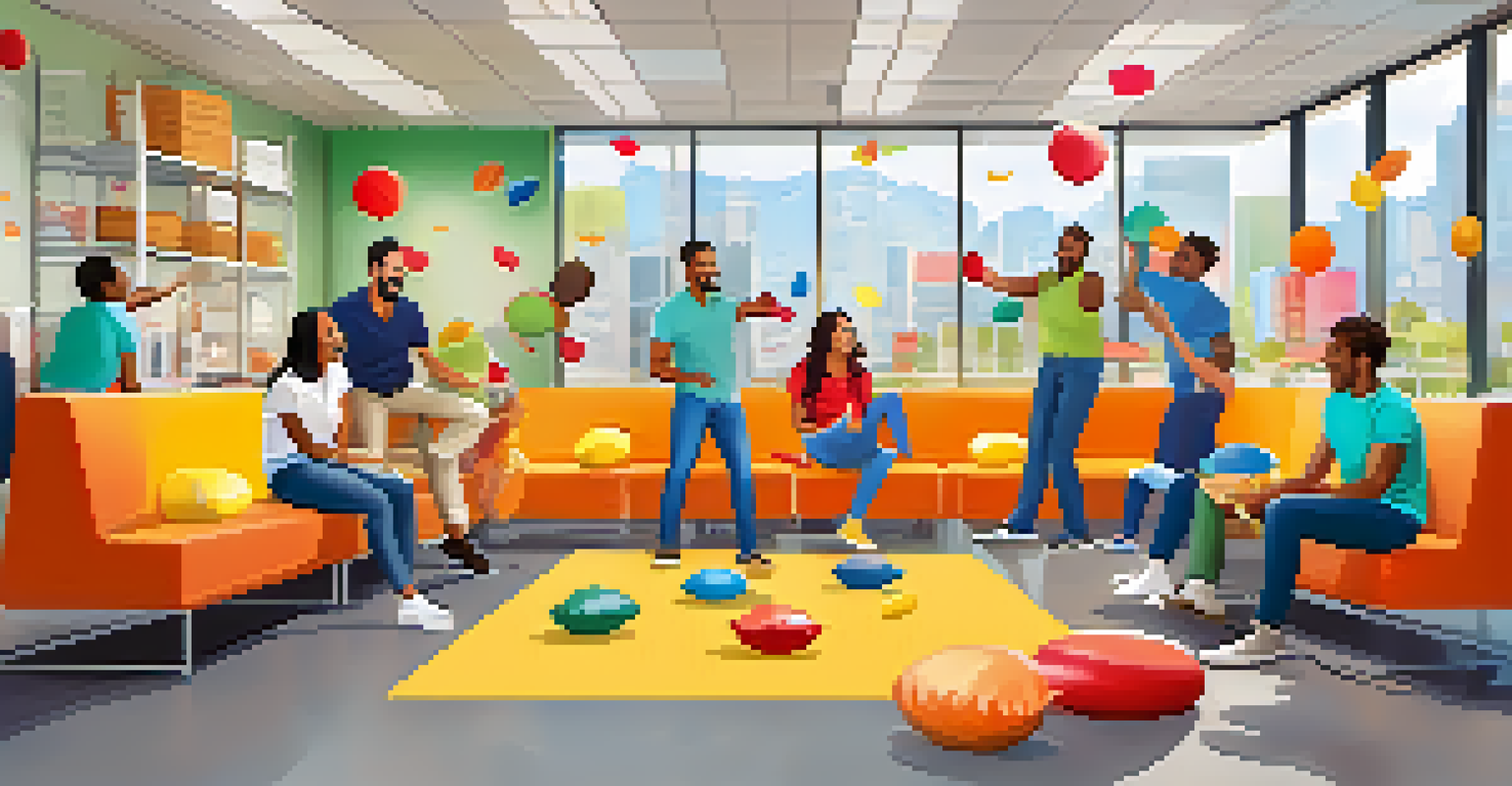Harnessing Creativity: Strategies for Workplace Innovation

Understanding the Importance of Creativity in the Workplace
Creativity isn't just for artists; it plays a vital role in every workplace. In today’s fast-paced business environment, innovative ideas are what set successful companies apart. When employees feel empowered to express their creativity, they’re more likely to contribute unique solutions to problems, driving overall growth and success.
Creativity is intelligence having fun.
Moreover, creativity leads to increased job satisfaction. When individuals can bring their creative ideas to life, they feel valued and engaged. This engagement not only boosts morale but also fosters a collaborative culture where everyone feels inspired to contribute.
In essence, harnessing creativity can transform workplace dynamics, making it essential for leaders to cultivate an environment that encourages imaginative thinking and experimentation. After all, innovation is the lifeblood of any thriving organization.
Creating a Supportive Environment for Innovation
To spur creativity, it’s crucial to cultivate an environment that supports risk-taking and experimentation. This means encouraging team members to explore new ideas without the fear of failure. A supportive atmosphere allows employees to share their thoughts freely, knowing they won’t be judged harshly.

Consider implementing regular brainstorming sessions where all ideas are welcome, no matter how outlandish they may seem. This practice not only generates a wealth of creative solutions but also builds team camaraderie as everyone collaborates towards a common goal.
Creativity Drives Workplace Success
Empowering employees to express their creativity leads to innovative solutions, boosting growth and job satisfaction.
Additionally, providing resources such as workshops or creative tools can inspire employees to think outside the box. When your team sees that their ideas are valued, it motivates them to push creative boundaries even further.
Encouraging Diverse Perspectives to Fuel Creativity
Diversity is a powerful catalyst for creativity. Bringing together individuals from different backgrounds, experiences, and perspectives can lead to more innovative solutions. Each person’s unique viewpoint contributes to a richer pool of ideas, sparking creativity that may not have emerged in a more homogenous group.
Innovation distinguishes between a leader and a follower.
To tap into this potential, consider forming diverse teams for projects. Encourage open dialogue where everyone feels comfortable sharing their insights, thus enriching the creative process. This collaborative approach not only leads to better outcomes but also promotes inclusivity within the workplace.
Moreover, embracing diversity fosters a culture of respect and understanding. As team members learn from one another, it cultivates an environment where innovative thinking thrives, ultimately benefiting the organization as a whole.
Implementing Flexible Work Arrangements for Creativity
Flexibility in work arrangements can significantly boost creativity. When employees have the freedom to choose where and how they work, they are often more productive and innovative. This flexibility allows individuals to find their most creative environments, whether that’s a quiet home office or a buzzing café.
Furthermore, allowing for adjustable hours can enable team members to work during their peak creative times. Whether someone is a night owl or an early bird, accommodating these preferences can lead to a surge of innovative thinking and output.
Diversity Fuels Innovation
Bringing together diverse perspectives enhances creativity, resulting in richer ideas and a more inclusive work culture.
By prioritizing flexible work arrangements, organizations can create a culture that values creativity and individual needs, leading to a more engaged and productive workforce.
Incorporating Playfulness into the Work Culture
Introducing elements of play into the workplace can significantly enhance creativity. When employees engage in playful activities, it can alleviate stress and promote a sense of camaraderie. Think of team-building exercises, brainstorming games, or even just a relaxed break area where fun activities are encouraged.
This playfulness can help to break down barriers and foster relationships among team members. As colleagues bond through shared experiences, they feel more comfortable sharing ideas, leading to a more collaborative and creative atmosphere.
Ultimately, a playful work culture can lead to unexpected breakthroughs and innovative ideas, proving that sometimes, a little fun can go a long way in boosting creativity.
Encouraging Continuous Learning and Development
Promoting a culture of continuous learning is vital for nurturing creativity. When employees are encouraged to expand their knowledge and skills, they bring fresh ideas and perspectives to the table. This can be achieved through workshops, online courses, or even book clubs focused on innovative thinking.
By investing in employee development, organizations not only enhance individual capabilities but also cultivate a more innovative team. As employees learn new techniques and approaches, they are inspired to apply them creatively in their work.
Flexibility Enhances Creativity
Allowing flexible work arrangements enables employees to find their optimal creative environments, increasing productivity.
In this way, fostering a love for learning not only benefits the employees but also drives the organization forward, creating a cycle of innovation that propels success.
Recognizing and Rewarding Creative Contributions
Recognizing and rewarding creativity is crucial for maintaining motivation within the team. When employees see that their innovative efforts are appreciated, they are more likely to continue pushing boundaries. This recognition can be as simple as verbal praise, or it could involve formal awards or incentives.
Moreover, celebrating creative successes fosters a sense of accomplishment and encourages others to think creatively. Highlighting individual and team achievements during meetings or through company newsletters can inspire a culture of innovation.

By making creativity a valued aspect of the workplace, organizations can create an environment where employees feel empowered to share their ideas and contribute to innovative solutions.
Measuring the Impact of Creativity on Innovation
To truly understand the value of creativity in the workplace, organizations should measure its impact on innovation. This could involve tracking project outcomes, employee engagement levels, or even customer satisfaction scores. By analyzing these metrics, businesses can see how creativity translates into tangible results.
Additionally, soliciting feedback from employees about the creative processes in place can provide valuable insights. Understanding what works and what doesn’t can help refine strategies and encourage more innovative thinking.
Ultimately, measuring creativity’s impact helps to reinforce its importance in the workplace, ensuring that it remains a priority for ongoing success.